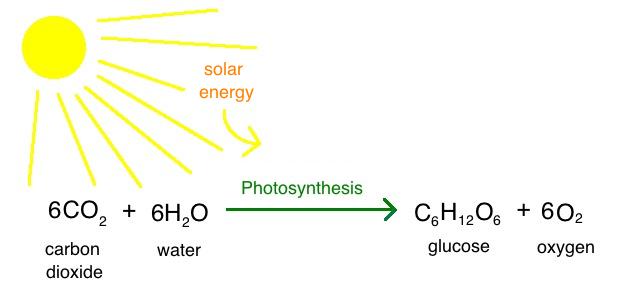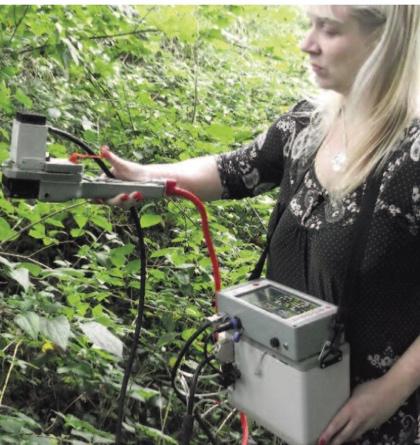I believe that many people have the hobby of placing green plants at home or in the office. Green plants can absorb CO 2 and formaldehyde, purify the environment, and release high-purity quality O 2 – businesses and sellers spare no effort to promote this. Yes, in the natural environment, plants do, photosynthetically absorb CO 2 and water, synthesize sugars and release O 2 , as shown in the figure below. The premise is that there must be enough light! However, in the indoor light environment, is the plant still the same? Ekotech's EcoLab laboratory used the LCpro SD photosynthetic apparatus produced by British ADC to measure the indoor green plants of the genus Amaranthus, which have good indoor growth. The results are as follows: Tm Eref ^e Cref ^c Qleaf Tch E Gs A Q mode 10:03:08 19.4 2.1 511 11 173 29.1 0.68 0.04 3.44 Climate 15:38:58 21.7 0.5 465 0 2 28.2 0.17 0.01 0.06 Meas. 15:39:13 21.7 0.5 465 -1 3 28.3 0.15 0.01 -0.45 Meas. 15:42:17 21.8 1.4 462 -6 2 28.7 0.44 0.03 -2.04 Meas. 15:42:38 21.8 1.4 459 -3 3 28.8 0.46 0.03 -0.86 Meas. Tm: measurement time, hh: mm: ss Eref: reference water vapor value, mbar ^e: water vapor change, mbar Cref: reference CO 2 , vpm ^c:CO 2 variation, vpm Qleaf: blade surface par value, μmol m -2 s -1 Tch: leaf chamber temperature, °C E: transpiration rate, mmol m -2 s -1 Gs:H 2 O stomatal conductance, mol m -2 s -1 A: photosynthetic rate, μmol m -2 s -1 Q mode: Light intensity measurement method The 10:03:08 measurement uses the RGB artificial light source that comes with the system. The light intensity is set to 173 μmol m -2 s -1 , so the plants have weak photosynthesis at a rate of 3.44 μmol m -2 s - 1 ; After the time, the artificial light source is removed under the general illumination in the room. At this time, the light intensity is about 2 or 3 μmol m -2 s -1 , and the photosynthetic rate A value can be clearly seen as basically 0 or negative. Value, plants basically do not carry out photosynthesis, the opposite plants are mainly engaged in respiration, intake of O 2 ! From this we can conclude that indoor green plants that are far away from the window or that do not have sufficient light can not provide O 2 as expected because they cannot guarantee the normal operation of photosynthesis. On the contrary, they consume some oxygen. According to the researchers, an adult needs 550 L/day of oxygen, which is about 11,000 L/day when it is air, and 32 g of O 2 when plant growth gains 15 g. The volume is about 22 at normal temperature and pressure. L, which means that when the plant gains 3.75 kg per day, it can provide 550 L of oxygen for an adult's daily needs, and 3.75 kg is equivalent to the weight of half a large watermelon. So, we like green plants because they keep us happy in life and work, not oxygen. Finally, we are honored to recommend to the users the photosynthetic apparatus L Cpro T and L C i T produced by A DC . The characteristics are as follows: In Vitro Diagnostic Instrument In vitro diagnostic instrument
According to the test principle, it can be divided into biochemical diagnostic reagent, immune diagnostic reagent, molecular diagnostic reagent, microbial diagnostic reagent, urine diagnostic reagent, coagulation diagnostic reagent, hematology and flow cytometry diagnostic reagent.
In Vitro Diagnostic Instrument,Blood Chemistry Analyzer,Urine Chemistry Analyzer,Detection Of Hcg Changchun ZYF science and technology CO.,LTD , https://www.zyf-medical.com


1. According to diagnostic methods, it can be divided into clinical chemical analysis instruments, immunochemical analysis instruments, blood analysis instruments and microbial analysis instruments.
2, according to the reagent collocation: open system, closed system.
Folding in vitro diagnostic reagents
Application of Photosynthetic Apparatus in Measuring Indoor Plant Photosynthesis
Reagent classification
Reagents can be divided into:
ï¬ Dry powder reagents
Dry powder reagent,in using process,need to be diluted by buffer or distilled water(Deionized
water) to dissolve before using the reagent.
ï¬ Liquid single reagent
Liquid single reagent refers to those no need any disposal before put in machine, just take it out
of the refrigerator and use it directly,and only need one reagent during use.
ï¬ Liquid double (multi) reagent
Liquid double (multi) reagent refers to those no need any disposal before put in machine,just
take it out of the refrigerator and use it directly, but in the process of using two or more reagents
are needed.